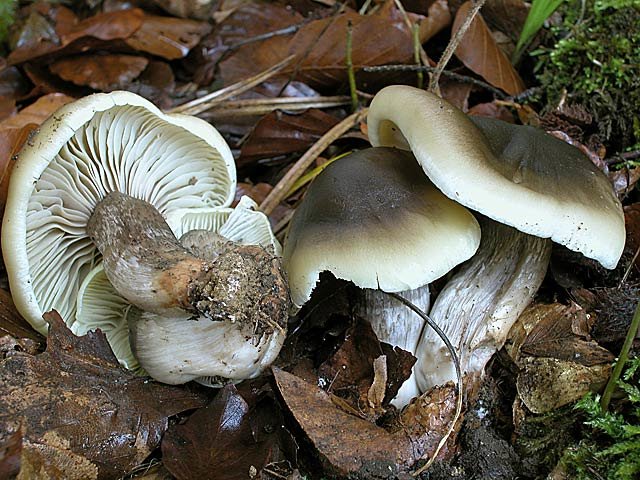Contents
Soap row (Tricholoma saponaceum)
- Division: Basidiomycota (Basidiomycetes)
- Subdivision: Agaricomycotina (Agaricomycetes)
- Class: Agaricomycetes (Agaricomycetes)
- Subclass: Agaricomycetidae (Agaricomycetes)
- Order: Agaricales (Agaric or Lamellar)
- Family: Tricholomataceae (Tricholomovye or Ryadovkovye)
- Genus: Tricholoma (Tricholoma or Ryadovka)
- Type: Tricholoma saponaceum (Soap row)
- Agaricus saponaceus;
- Gyrophila saponacea;
- Tricholoma moserianum.

Mushroom Soap line (lat. Tricholoma saponaceum) belongs to the genus of mushrooms of the Ryadovkovy family. Basically, the family of these mushrooms grows in rows, for which it got its name.
The soap row is named for the rather unpleasant smell of laundry soap emitted.
External Description
The cap of the soapwort is initially hemispherical, convex, later almost prostrate, polymorphic, reaching from 5 to 15 cm (occasionally 25 cm), in dry weather it is smooth or scaly, wrinkled, in wet weather it is slightly sticky, sometimes divided by small cracks. The cap color varies from the more typical buffy grey, grey, olive grey, to blackish brown with a blue or lead, sometimes greenish tint. The thin edges of the cap are slightly fibrous.
Together with a soapy smell, a reliable distinguishing feature of this fungus is the flesh that turns red when broken and a rather bitter taste. The root-like leg of the fungus tapers downwards. It is covered with blackish small scales.
Grebe season and habitat
Soap row is considered a widespread mushroom. The fungus is found in coniferous (forms mycorrhiza with spruce) and deciduous forests, as well as meadows from late August to late October in large groups.
Similar types and differences from them
The soap row is very similar in appearance on a gray row, from which it differs in a darker color of the plates, olive tones of the cap, pinkish flesh (in the stem) and a noticeable unpleasant odor. It differs from greenfinch in rare light (not greenish-yellow) plates and an unpleasant odor. More similar to a conditionally edible, brown-spotted row, growing mainly on humus soil under birch trees and having a pronounced mushroom smell.
Edibility
There are conflicting rumors about the edibility of this fungus: some consider it toxic (soap row can cause an upset in the gastrointestinal tract); others, on the contrary, salt it with garlic and horseradish after preliminary boiling. When cooking, the unpleasant smell of cheap laundry soap from this fungus only intensifies.









